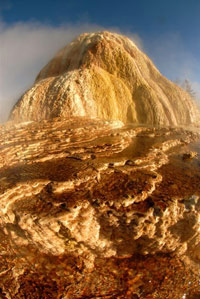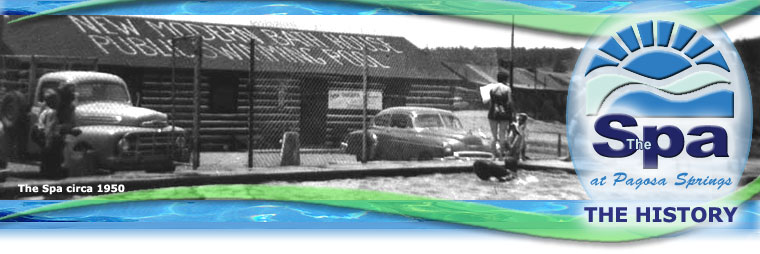|
Hot Springs Formations: How Does it Happen?
 Hot springs are found where there has been geologically recent volcanism. In Pagosa Springs, heavily mineralized waters reach the surface at more than 150 degrees. Hot springs are found where there has been geologically recent volcanism. In Pagosa Springs, heavily mineralized waters reach the surface at more than 150 degrees.
The water contains hydrogen sulfide, and large amount of dissolved silica [quartz] that precipitates as tufa when the water evaporates. Tufa is similar to travertine. You can see a part of these deposits across the river from the municipal parking lot. Man-made structures obscure the fact that the buildup of tufa deposits from the spring was responsible for the bend in the river here.
Although the spring discharges water at a rate of about 700 gallons per minute, it is used in the pools at the motels and to heat several buildings in town, so it no longer overflows to deposit more tufa along the river.
Early settlers in Pagosa Springs took full advantage of the comforts afforded by the mineral waters. Many built special bathing rooms attached to their homes to soak in privacy; others (beginning in the 1900s) tapped the 153-degree waters as a source of winter heat, piping them in directly via rudimentary plumbing systems. This practice gained widespread attention in the 1970s, when nationwide oil shortages raised the demand for cheap, renewable energy.
Local officials moved quickly to harness the resource, launching a $1 million system in 1982 to heat downtown buildings and aid with sidewalk snow removal. The ground-breaking project demonstrated the great energy potential of Colorado’s natural hot springs, which according to one estimate could heat up to 100,000 homes each winter.
Courtesy of Colorado Historical Society
Top of Page
|
